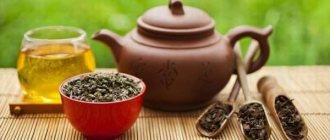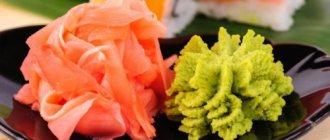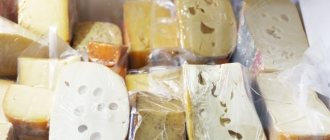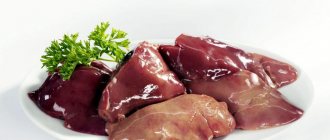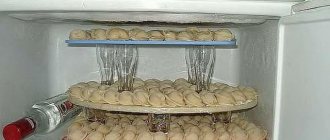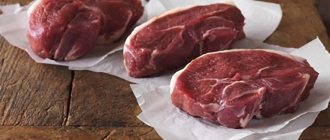Experts advise drinking the drink 5-10 minutes after brewing. It was at this moment that the leaves transferred all the beneficial substances into the liquid, and the tea can have a healing effect on our body.
To ensure that the drink brings maximum benefit and pleasure, follow simple rules of consumption:
Shelf life of brewed tea
Sometimes a tea drink can cause harm to the body if consumed at the wrong time. Freshly brewed tea should not be drunk when you are feeling hungry. Otherwise, the drink will lead to severe heartburn and unpleasant abdominal pain.
When tea has stood all night, it is dangerous to drink it in the morning. The drink has become a breeding ground for bacteria and fungi. They will harm the body and can cause diseases.
If the tea sits for more than 2 hours, all the beneficial microelements begin to oxidize and its shelf life has come to an end. Such a drink will not cause harm to the body. However, there will be no therapeutic effect from the tea. The drink will taste too strong and unpleasant.
The period during which you can drink brewed tea is quite short. The shelf life of such a drink is influenced by several factors, including its variety and preparation conditions.
It is recommended to drink black tea within a maximum of 30 minutes. If tea leaves remain after use, it is better to put it in the refrigerator. This will help keep the tea fresh for 12 hours. If the tea leaves stay longer, it is better not to risk your health and dispose of it.
How to identify low-quality tea
Immediately when purchasing, you need to pay attention to the packaging box. It must be intact, without damage. Also, high-quality tea has a shelf life of no more than 2 years. A high-quality drink will never be cheap. It is better to buy loose leaf teas packaged in opaque bags or paper bags that are placed in tin or clay jars. There must be a protective film coating on top that does not allow foreign odors to pass through.
Poor quality tea can be identified by its appearance
When you open the package, a pleasant and rich aroma should emanate from it. The tea leaves should be almost equal in size. The presence of tea dust or broken fragments at the bottom of the pack is not allowed. If it is black or red tea, the color of the leaves should be as close to black as possible. Properly dried leaves do not crumble into dust; when you try to break them, they crunch. When brewing, a foam forms at the top, which does not disappear within a couple of minutes. Freshly brewed tea has a slightly astringent taste on the tongue.
Under no circumstances should a film be created during welding.
If you have not yet opened the package, but are not satisfied with something, you have the right to return the product back to the store. If upon opening you find unpleasant odors or mold, you can also return the product back. In both the first and second cases, you must have a receipt with you.
Black tea
Green teas can be brewed several times, but tea that has been left in room conditions is not suitable for repeated brewing. As with black tea, green tea can be kept in the refrigerator, but not more than 13 hours.
This tea is ready to drink literally a couple of minutes after brewing. The drink does not spoil if you add water to it while it is warm. Otherwise, oolong tea cannot be brewed again. Tea leaves that have stood for more than 6 hours should not be consumed.
According to GOST 31987-2012, tea with lemon can be stored for no more than 30 minutes. After this period, the product must be disposed of and not stored in the refrigerator, writes KhozNauka.
The shelf life of tea in packaging is written on the packs; this should not cause any difficulties. What to do with an already brewed drink? Tasty and aromatic, it can either add or take away health. In order not to harm your own body and not harm your loved ones, you need to know the maximum permissible periods for drinking already brewed tea.
There are other, no less important, rules that will give the body only the best and healthiest from the drink:
How to store it correctly
In order for tea to retain its beneficial effects on the human body for as long as possible, it must be stored correctly. After all, for example, tea from China must be kept in refrigerators. Putting it in the cold no longer makes sense if you bought such a drink off the shelf in a store.
How to store at home
In the kitchen, it is recommended to store in airtight containers that do not allow sunlight to pass through. You can use a tin can. It is allowed to place tea in a container made of clay or porcelain. It is better not to store the drink in wooden containers, because it has its own specific smell, which the tea will definitely absorb.
When storing at home, the following rules must be observed:
- should be stored at a temperature of 37 degrees;
- The place in which the drink is stored must be protected from sunlight:
- the room should be ventilated;
- Do not place tea near products that have strong odors.
Under production conditions
During improper storage of tea, modifications occur in the chemical composition of the drink, which lead to the breakdown of tea and the release of essential oils from it, which reduces its quality indicators. In production conditions, tea should be preserved:
- in dry, ventilated rooms;
- air humidity 60-65%;
- do not store with perishable products or with strong odors;
- the packaging must be sealed.
Rules of use
Tea has long been recognized by official medicine as one of the oldest remedies for many ailments. To really benefit the body, you need to know some of the secrets of brewing and drinking this drink. The most important indicator will be the shelf life; it is written on the package. The indicated date shows until what period the packaged raw materials must be used; further use is not advisable, since harmful microorganisms and bacteria may begin to develop there.
Dry tea should be brewed carefully, strictly observing the proportions; with the above contraindications, a strong drink will only aggravate the condition, and there will be no benefit to the body at all.
It is also important to comply with quantitative standards. Brewed tea, the shelf life of which is normal, in large quantities can negatively affect a person’s health. The permissible amount of black tea for a healthy person is measured in medium-sized mugs; there should be no more than five of them per day. A properly brewed green drink in the amount of two teapots per day will be harmless to the body of an adult.
The bag cannot be brewed twice, even if the first time it was dipped in boiling water for seconds. This drink will no longer be tart and aromatic. The benefit from it is minimal.
The only tea without an expiration date is pu-erh. It is stored in air, which only improves the taste of the drink over time.
Does the tea product have a shelf life and shelf life?
Tea is a food product, which means that consuming it in a spoiled state can cause serious health problems. To prevent such a situation, you need to remember the concepts of “shelf life” and “shelf life”. Let's figure out whether tea has these set periods, and what exactly the shelf life or shelf life of this product means.
What exactly do they guarantee, what is their difference?
- Shelf life is the period of time during which the tea material is suitable for consumption and has the characteristics specified in the state standard, subject to compliance with the specified storage standards.
This means that during this period it retains all its organoleptic properties in the same condition as when released. After the shelf life expires, some of the characteristics are partially lost, but this is not critical: tea leaves can still be used to prepare a drink. - The expiration date is the time during which the tea can be consumed, but after it expires, the tea leaves become unsuitable for use. The sale of such a product is illegal, and its use can cause significant harm to health.
Which of these periods is set?
The state guards the rights of consumers, ensuring compliance with standards and expiration dates and storage of tea products.
- According to the Decree of the Government of the Russian Federation dated June 16, 1997 No. 720, the manufacturer must indicate the expiration date of any food product, including tea, and bring this information to the attention of the buyer without fail.
- The state standard indicates the mandatory designation of the shelf life of tea products by the manufacturer, as well as the requirements for the conditions of storage and transportation of black and green tea during the specified period (GOST 32573-2013, GOST 32574-2013).
Separate documents indicate the technical conditions for packaging, transportation and storage of this product: GOST 1937-90 is developed for unpackaged black long tea, GOST 1939-90 - for packaged green long tea. These standards also indicate specific shelf life: black tea can be stored for 8 months, and green tea for one year.
The quality of all tea products is regulated by the GOST 32593-2013 standard, which specifies the main types of teas and their organoleptic properties (appearance, aroma, taste).
From what date does it count?
The state standard determines that the shelf life of tea material must be calculated from the date of its packaging. It is advisable to determine the shelf life of the product from the moment the tea production technology is completed.
It should be taken into account that from the moment the package is opened, the shelf life is reduced to an average of 40 - 90 days.
Tea bags
Fully fermented varieties have the richest flavor. Both red and black tea have a subtle bittersweet aftertaste - a consequence of fermentation of plant juice. The brew is strong and dark – from red-golden to black-brown.
To prevent the drink from losing its beneficial properties, it must be stored correctly. For loose leaves, use an airtight container - glass, ceramic or metal.
The shelf life of brewed highly fermented tea is 10-15 minutes. You can drink the drink later, but it will become too bitter and astringent.
The answer to the question “How long does tea last?”
After this, scald the inside of the teapot with boiling water and leave it open until it dries.
And after the infusion has cooled to 30°C, the liquid turns into an attractive nutrient substrate for fungi and other microorganisms. After 2–3 days of life of this microflora, mold appears in the teapot, and the tea actually turns into poison for humans. To prepare tea again, the dishes need to be treated: rinse the teapot under running water, remove mucus from the walls with a clean cloth.
How to choose a good loose leaf tea
To choose the best product, you first need to pay attention to the labeling indicated on the packaging. Russian GOST distinguishes several types of tea: bouquet - a product of the highest quality, highest grade, 1st, 2nd or 3rd grade.
Some explanations of the marking abbreviations:
- "Ortodox" - tea made by hand with minimal damage to the leaves;
- “STS” is a product manufactured using machine technologies;
- “Pure” is a high-quality variety of tea that has unique taste and aroma characteristics and is not mixed with other varieties;
- “Blended” is a mixture of several varieties. Usually these are 2-3 varieties of tea, where 1-2 varieties are of low quality, 1 is of high quality, thanks to which the taste and aroma become acceptable to the consumer.
In addition to the labeling, it is worth paying attention to the product itself:
- the color of brewed black tea should be bright without brown, gray or other shades; green - without white or bright green leaves;
- the tea leaves should be approximately the same size, without dust, twigs and tea fines;
- pleasant aroma without foreign odors;
- freshness - no more than 1-2 months of storage;
- sealed packaging.
Remember that tea bags are the lowest quality type, as waste (tea dust) is used in its production. There is no benefit in such a product. Harm, however, too.
How to identify a low-quality product
A product of poor quality can be distinguished by smell, appearance and taste:
- The aroma of tea should not be musty, the tea leaves should not smell of mold, smoke or dust.
- The color of the leaves should be rich and free of white deposits or rotten elements. In good tea, the tea leaves are uniform, without twigs, crumbs, etc.
- The taste of a quality drink is pronounced and aromatic.
How long does brewed tea last?
There is an ancient saying in Japan: “Tea on the second day is worse than a snake bite.” There is truth in these words. Tea leaves are an amazing substance: in a dry leaf, beneficial elements are stored for years, but in a brewed drink they are destroyed after only 2 hours.
The tea film is the constant companion of the tea you haven’t drunk in the morning.
It's better to share a drink with good company than to leave it for later.
